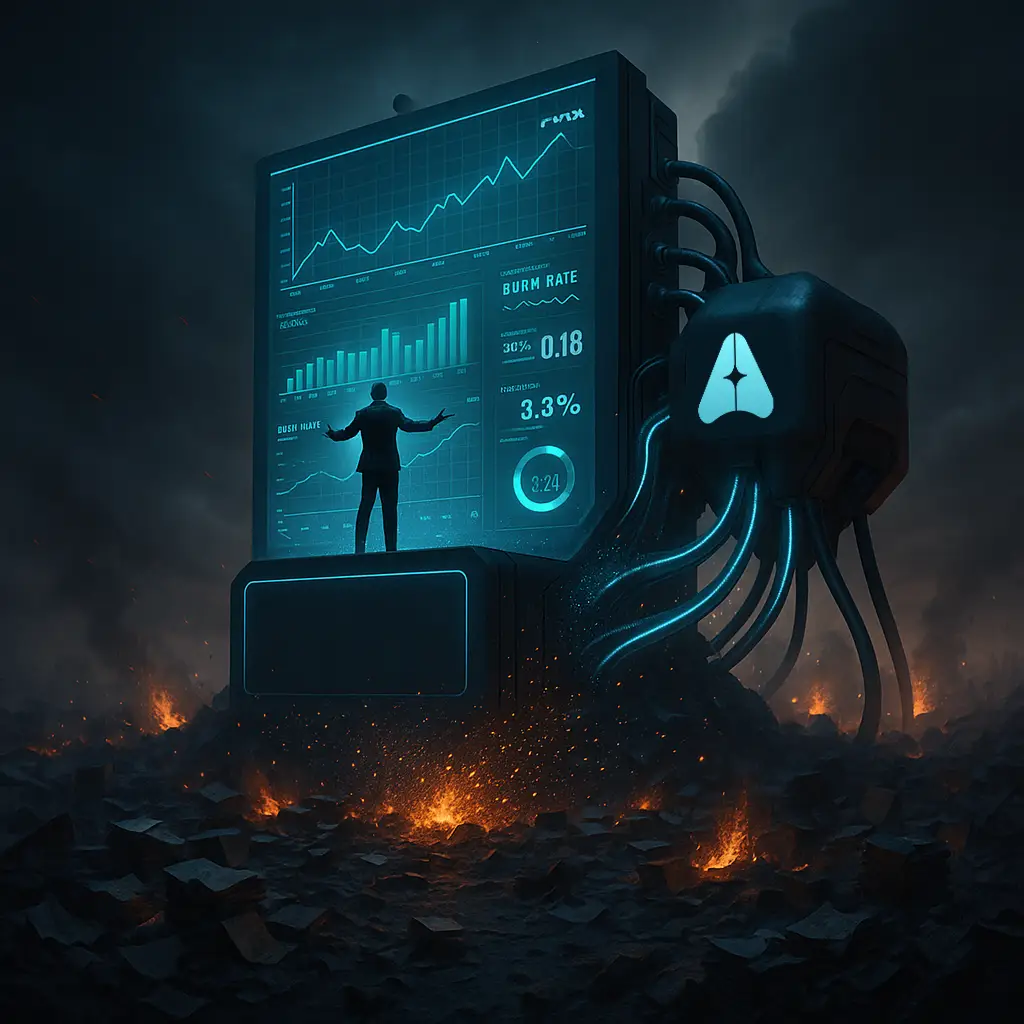Key takeaways
- CEOs need real-time dashboards to make strategic decisions without spreadsheet chaos and delayed MIS reports.
- AI Accountant transforms raw data into actionable insights through automated, localized dashboards for Indian SMBs.
- A well-designed CEO dashboard focuses on critical KPIs such as revenue vs expenses, profitability, cash flow trends, and burn rate.
- Real-time financial visibility addresses Indian SMB-specific challenges like bank format diversity, GST compliance integration, and software synchronization.
- Chartered Accountants can leverage dashboards to offer premium services, enhance client relationships, and scale advisory offerings.
Table of contents
- Key takeaways
- Table of contents
- Why CEOs Need a Financial Dashboard
- What Should Be on a CEO Dashboard?
- Real-Time Financial Visibility for Indian SMBs
- Dashboards for CAs to Use with Clients
- FAQ
Why CEOs Need a Financial Dashboard
In many Indian SMBs, CEOs start their day buried in spreadsheets, waiting for the finance team to deliver last month’s MIS report. You deserve concise, actionable insights, not an avalanche of raw data. Imagine making hiring or investment decisions based on yesterday’s numbers, not data delayed by days or weeks.
Without a real-time financial dashboard you face:
- Spreadsheet Chaos: Multiple Excel versions, conflicting figures, and endless data reconciliation.
- Delayed MIS Reports: Traditional compliance-focused systems deliver reports too late for urgent decision making.
- Communication Gaps: Your CFO speaks accounting, while you need clear business insights to lead effectively.
In a fast-moving market, waiting 15 days for financial clarity is like driving while staring in the rearview mirror.
What Should Be on a CEO Dashboard?
An effective executive dashboard examples focus on KPIs that truly drive business decisions. Key elements include:
- Revenue vs. Expenses Overview: A profit pulse check, showing month-over-month trends to gauge sustainable growth.
- Gross and Net Profit Visibility: Core business health and operational efficiency, presented through color-coded visuals.
- Cash in Bank and Cash Flow Trends: Current cash position and recent trendlines, critical for businesses with delayed payments.
- Burn Rate and Runway Analysis: Essential for startups, predicting how long current funding will last at present spending rates.
- Outstanding Receivables and Payables: Aging reports to manage collections and vendor payments strategically.
Visual displays through charts and graphs empower executives to understand trends at a glance and act swiftly.
Real-Time Financial Visibility for Indian SMBs
Building a real time finance dashboard India requires tackling unique local challenges. Delayed bank feeds, fragmented accounting systems, GST compliance, and varied data formats all complicate the picture.
Indian Banking Complexity: From CSV to PDF to image-based statements, every bank’s format differs. Your dashboard must ingest and clean data automatically. Bank Statement OCR Tool Guide
GST and Compliance Integration: Track GST liabilities and input tax credits alongside revenue and expenses to avoid surprises during filing seasons. GST Reconciliation Automation
Tally and Zoho Synchronization: Seamless sync with Tally or Zoho Books ensures live data flow—no manual exports. Top Tally Automation Tools Zoho Books Automation Tips
AI Accountant ingests, categorizes, and syncs transactions continuously, giving you updated numbers whenever you need them.
Dashboards for CAs to Use with Clients
As Chartered Accountants evolve into strategic advisors, delivering real-time dashboards becomes a key differentiator:
- Premium Service Offerings: Offer continuous financial visibility instead of monthly MIS reports, positioning your firm as a proactive partner.
- Client Relationship Transformation: Shift discussions from compliance to strategy with live metrics at your fingertips.
- Scalable Client Management: Serve more clients efficiently by automating dashboard delivery, while maintaining high touch advisory services.
- Instant Client Communications: Answer cash position or receivables queries on the spot, enhancing trust and responsiveness.
Using AI Accountant, CA firms can modernize their advisory practice and deepen client engagement.
FAQ
How can AI Accountant help automate our firm’s MIS reporting process?
AI Accountant integrates with Tally and Zoho Books to ingest transaction data continuously, categorize entries using AI trained on Indian accounting patterns, and generate MIS reports on demand, eliminating manual reconciliation.
What key metrics should a CEO focus on in their dashboard?
A CEO should track revenue vs expenses, gross and net profit, cash flow trends, burn rate, and aging of receivables and payables for a complete financial picture.
Can AI Accountant handle different bank statement formats in India?
Yes, AI Accountant’s OCR engine reads CSV, PDF, and image-based statements from all major and regional banks, automating data extraction without manual intervention.
How does real-time GST integration work on the dashboard?
The dashboard syncs GST liability and input tax credit data with your accounting software, updating figures continuously so you never miss a compliance deadline.
Is it possible to customize KPIs for different industries?
Absolutely, AI Accountant allows CEOs to choose industry-specific KPIs and create custom dashboard widgets, ensuring relevance to your business model.
How do CAs offer dashboards as a premium service?
CAs can package real-time dashboard access into retainer agreements, providing clients with live insights and positioning the firm as a strategic partner.
What is the typical setup time for AI Accountant’s dashboard?
Integration with Tally or Zoho Books and bank statements usually takes 1-2 days, including data mapping, cleansing rules, and initial dashboard configuration.
Can AI Accountant support multiple client dashboards simultaneously?
Yes, CA firms can manage hundreds of client dashboards from a single interface, scaling services without increasing headcount.
How secure is the data processed by AI Accountant?
AI Accountant uses encrypted data channels, role-based access controls, and regular audits to ensure client financial data remains confidential and compliant with local regulations.
What kind of training is required to use the dashboard effectively?
Minimal training is needed; the intuitive interface, guided walkthroughs, and support resources allow CEOs and accountants to start monitoring real-time metrics immediately.

-01%201.svg)
